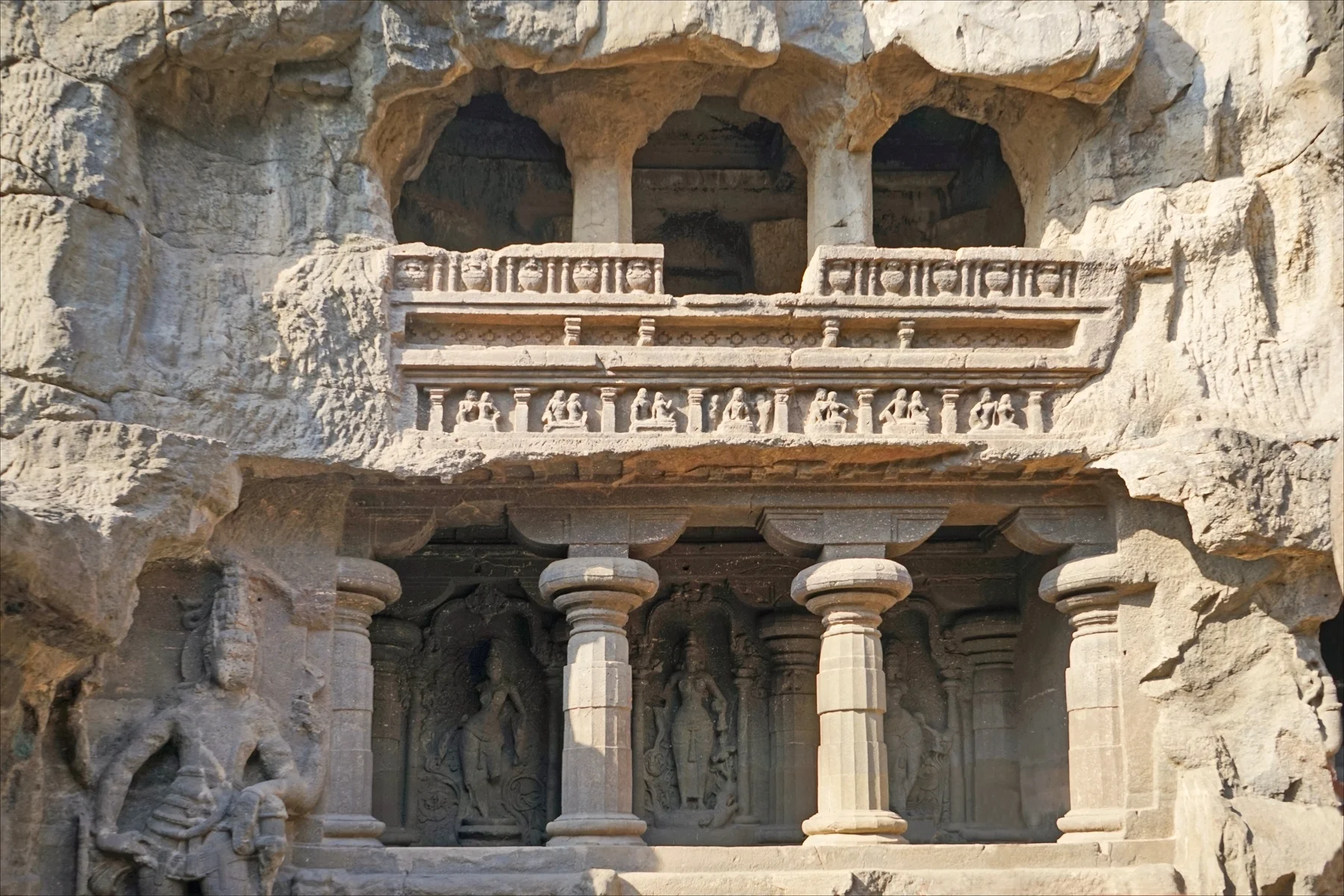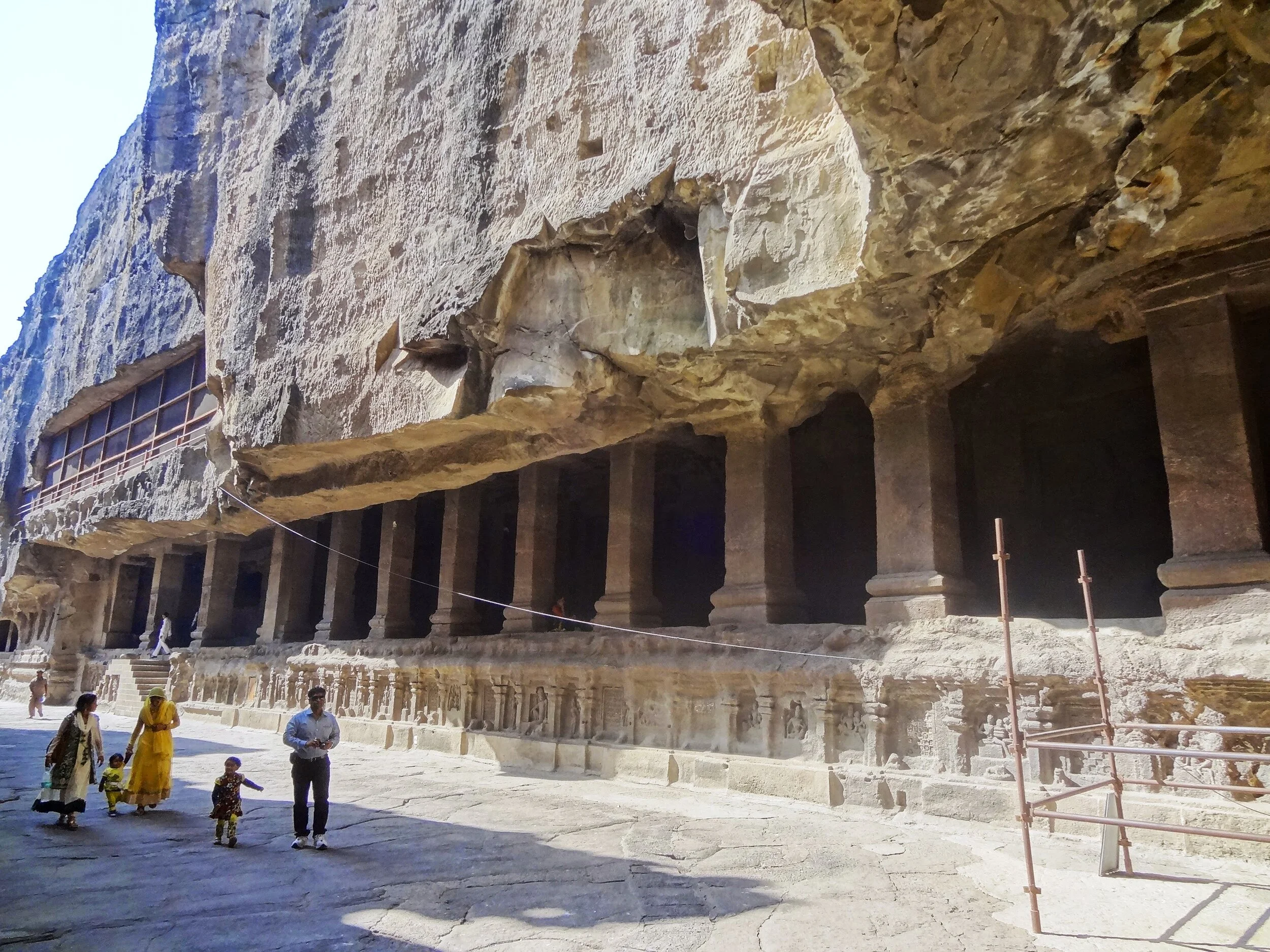Working as site interpretation & educational outreach consultant for the Delhi-based Cultural Resource Conservation Initiatve (CRCI) in 2009, Liz drafted a plan that communicates the values and multiple layers of significance of the Ellora Caves to a range of audiences and is guided by the principles outlined in the ICOMOS Charter for the Interpretation and Presentation of Cultural Heritage Sites. Her final recommendations were incorporated into the comprehensive conservation management plan for the Ellora Caves prepared by CRCI for its client, the Archaeological Survey of India.
The Ellora Caves, located in the rocky, hilly regions of the Deccan plateau, date between the fifth and thirteenth centuries AD and comprise temples belonging to the Brahmanical, Buddhist and Jaina religions. These cave temples were primarily monsoon retreats, vasa for the Buddhist and the Jaina monks. During the monsoons, when it was difficult or the monks to wander across the country, spreading their teachings and collecting alms, they would take shelter in these caves, meditate and discuss important religious ideas. The architectural splendor of these cave temples show that they were heavily patronized by the rulers, merchants and mercantile guilds, who were probably the followers of Buddhism.
Images: Wikimedia Commons.

